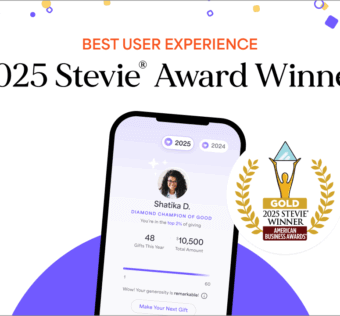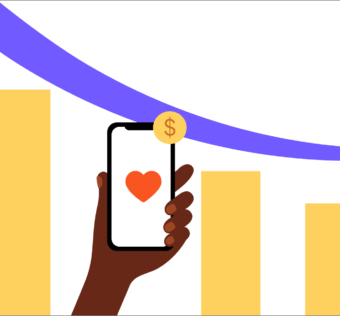4 Nonprofit Fundraising Hacks You Need to Try
We’ve all heard of life hacks — clever little time- or effort-savers sprinkled all around the internet. They all claim to revolutionize your life, which, let’s be honest, is a bit of a stretch. Some are genuinely great, though: I’m pretty clumsy with a hammer, so the one about holding a nail with a clothespin to save from smashing your fingers is pretty handy. But have you considered “hacking” your nonprofit fundraising efforts? Are there similar simple adjustments you can make that could reap big dividends?
We think the answer is yes. Consider trying the following nonprofit fundraising “life hacks” to boost your efforts.
1. Create Post-Fundraiser Incentives
This is a good idea in general, but it’s especially useful for event-based fundraisers, where the majority of the action occurs on just one day (like walk-a-thons, 5Ks, or silent auctions). The Get Movin Crew, a group that runs a one-day “fun run” fundraiser for nonprofits, estimates that groups tend to raise 10% of their funds after the event has concluded.
How do they do it? They offer incentives after the fact for additional donations. These experts also mention that if you don’t meet your initial nonprofit fundraising goals, it’s important to clearly communicate the remaining need to your donor base. If you don’t tell them otherwise, they will assume you’ve already met your goals.
2. Reach Your Entire Donor Base with Mobile Giving

Imagine you’re hosting a one-night event (say, a gala or a benefit concert). It’s unlikely that 100% of your donor base can attend, right? In the 20th century, your options for receiving donations from non-attendees were slim. Perhaps you asked them in your mailed invitation to send in a donation, but that created a lot of unnecessary friction. They had to actually go through the trouble of mailing in a physical check. Many who may have intended to do so just never got around to it.
Today, digital tools like mobile giving have greatly improved the situation. Now, when you send out an initial invitation, you can include an option to give via mobile, and your entire donor base (those who can attend the event and those who can’t) can easily donate via mobile in three simple taps. It’s easy, and it’s low-friction.
3. Unlock Added Donations with a Modern Website
Planning and executing event-based fundraisers take a lot of time and energy, but don’t forget about your website. According to the 2017 M+R Benchmarks study, nonprofit donations through websites averaged to $1.19 per visitor in 2016. That’s up from $0.60 per visitor in 2014. They also saw a 15% increase in the number of gifts and a 14% increase in online revenue compared to 2015. Donations through nonprofit websites are on the increase, so be sure to ride that trend.
Make it easy to give on your website by creating a responsive site (one that automatically resizes for mobile devices). And keep the donation process simple: you want to make it as easy as possible for people to part with their money. Givelify makes this easy by providing a line of code you can drop anywhere on your website that will create an easy giving button, and social giving links that can be distributed through all your digital communication channels.
4. Focus Your Donors on Individual Stories

Another nonprofit fundraising organization points out that people give more when they have one person in mind rather than 10,000. Similarly, they give better when thinking of individual stories of need/recovery/triumph than they do when presented with a large group in need. So try telling stories about individuals’ needs. People can more realistically envision themselves meeting smaller needs, and this prompts them to give.
Before your next major fundraiser, try a few of these hacks and see what additional money might come in.



